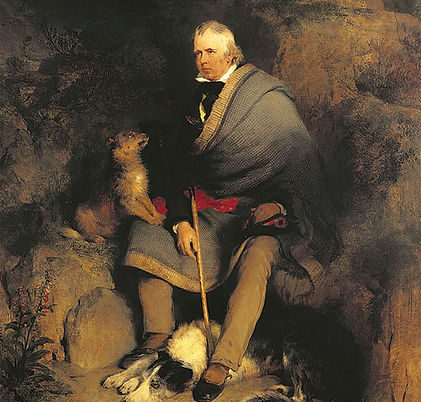Authors & Poets
Honoring the creative ...
Click any picture to navigate to the page of interest for more information about this tartan or its associated day.
Lawrence's Seven Pillars of Khaki
May 19
T.E. Lawrence
This tartan was designed to commemorate Lawrence of Arabia. The orange brown represents Wadi Rum and his famous raid on Aqaba as well as the warm internal hues and tones of Clouds Hill, his secluded Dorset retreat. Red represents his birthplace at Tremadoc and Welsh ancestry. The cross of Saint George is contrived in the sett to demonstrate his admiration for ‘Richard the Lionheart’ and his thesis on Crusader Castles. Blue and green represent Irish connections and two periods of RAF service.
Lermontov
Jun 6
Russian Language Day
Russian Romantic writer, poet, and painter Mikhail Yuryevich Lermontov—often known as “the poet of the Caucasus”—left a powerful literary legacy in the short span of his life. In just six years, he composed more than 30 major poems, 600 minor ones, five dramas, and a novel that helped shape the Russian psychological tradition.
Born in Moscow into a noble family, Lermontov was raised in the village of Tarkhany (now Lermontovo in Penza Oblast). His paternal line descended from the Scottish Learmonth family. One ancestor, Yuri (George) Learmonth, a Scottish officer in the Polish-Lithuanian service, settled in Russia in the mid-17th century. Family legend traces this lineage back to the famed 13th-century Scottish seer and poet Thomas the Rhymer—also known as Thomas Learmonth of Erceldoune.
Brilliant, impulsive, and purposefully provocative, Lermontov embodied the spirit of a Byronic hero, attracting both acclaim and controversy. His life ended dramatically in a fatal cliffside duel with a former friend and fellow soldier.
In 2014, a monument honoring Lermontov was unveiled in the Scottish village of Earlston, a place linked to his poetic ancestor, Thomas the Rhymer. This symbolic gesture celebrated not only Lermontov’s literary contributions but also his deep ancestral ties to Scotland.
The Lermontov tartan commemorates this dual heritage. The white lines on blue symbolize Saint Andrew, patron saint of both Russia and Scotland, as well as the Scottish saltire. These elements honor the Lermontov family's Scottish roots. The remaining colors are drawn from the Lermontov coat of arms, registered in Russia in 1798. The three black lines in the tartan represent the three lozenges featured in that heraldic device. ❤️ 💙 🤍 💛 🖤 ✍️ 🇷🇺
Robert Burns
Jan 25
Burns Night
As well as making original compositions, Burns collected folk songs from across Scotland, often revising or adapting them. His poem (and song) "Auld Lang Syne" is often sung at Hogmanay (the last day of the year), and "Scots Wha Hae" served for a long time as an unofficial national anthem.
Colonel T.E. Lawrence
May 19
T.E. Lawrence
Thomas Edward Lawrence, sometimes known as "Lawrence of Arabia" was an archaeologist and British Army officer renowned especially for his liaison role during the Sinai and Palestine Campaign, and the Arab Revolt against Ottoman Turkish rule of 1916–18. From the painting by Augustus John (1919), "Colonel T.E. Lawrence"
Sir Walter Scott in Rhymer's Glen
Aug 15
Sir Walter Scott's Birthday
Sir Henry Raeburn's portrait of Sir Walter Scott (1822), a Scottish historical novelist, playwright, and poet. Famous titles include Ivanhoe, Rob Roy, The Lady of the Lake, Waverly, The Heart of Midlothian, and The Bride of Lammermoor.

















